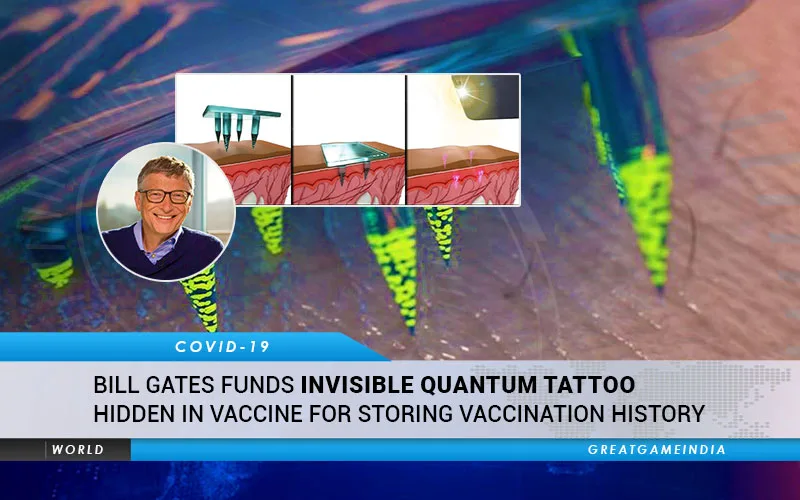 Bill Gates Funds Invisible Quantum Tattoo Hidden In Coronavirus Vaccine For Storing Vaccination History
Bill Gates Funds Invisible Quantum Tattoo Hidden In Coronavirus Vaccine For Storing Vaccination HistoryFunded by Bill Gates, Massachusetts Institute of Technology (MIT) researchers have developed a clandestine way to record your vaccination history: storing the data in a pattern of dye or tattoo ink, invisible to the naked eye, that is slipped under the skin hidden in your vaccine.
“This technology could enable the rapid and anonymous detection of patient vaccination history to ensure that every child is vaccinated,” says Kevin McHugh, a former MIT postdoc who is now an assistant professor of bioengineering at Rice University.
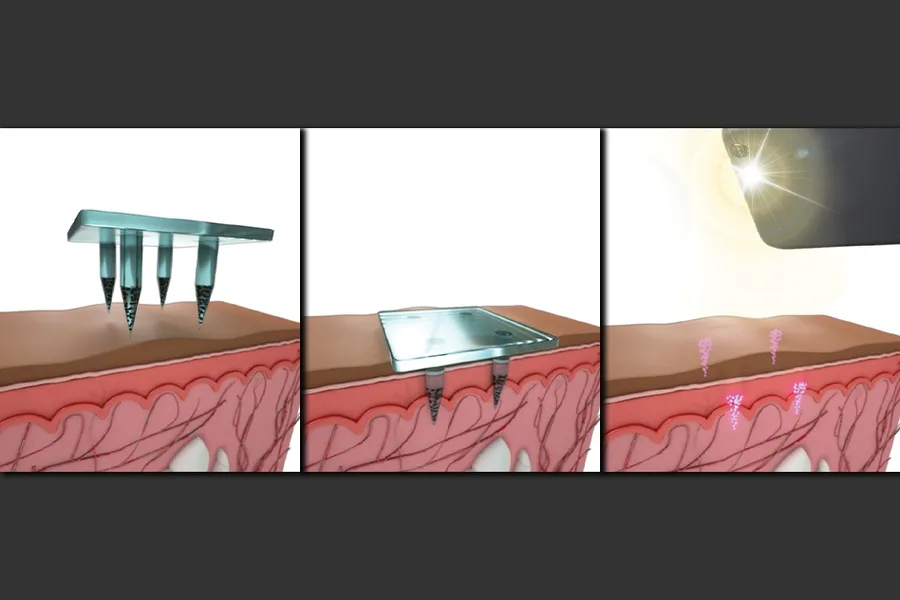
Funded by Bill Gates, Massachusetts Institute of Technology (MIT) researchers have developed a clandestine way to record your vaccination history: storing the data in a pattern of dye or tattoo ink, invisible to the naked eye, that is slipped under the skin hidden in your vaccine.
The researchers showed that their new dye, which consists of nanocrystals called quantum dots, can remain for at least five years under the skin, where it emits near-infrared light that can be detected by a specially equipped smartphone.
McHugh and former visiting scientist Lihong Jing are the lead authors of the study, which appears today in Science Translational Medicine. Ana Jaklenec, a research scientist at MIT’s Koch Institute for Integrative Cancer Research, and Robert Langer, the David H. Koch Institute Professor at MIT, are the senior authors of the paper.
To create an “on-patient,” medical record, the researchers developed a new type of copper-based quantum dots, which emit light in the near-infrared spectrum. The dots are only about 4 nanometers in diameter, but they are encapsulated in biocompatible microparticles that form spheres about 20 microns in diameter. This encapsulation allows the dye to remain in place, hidden under the skin, after being injected along with a vaccine.
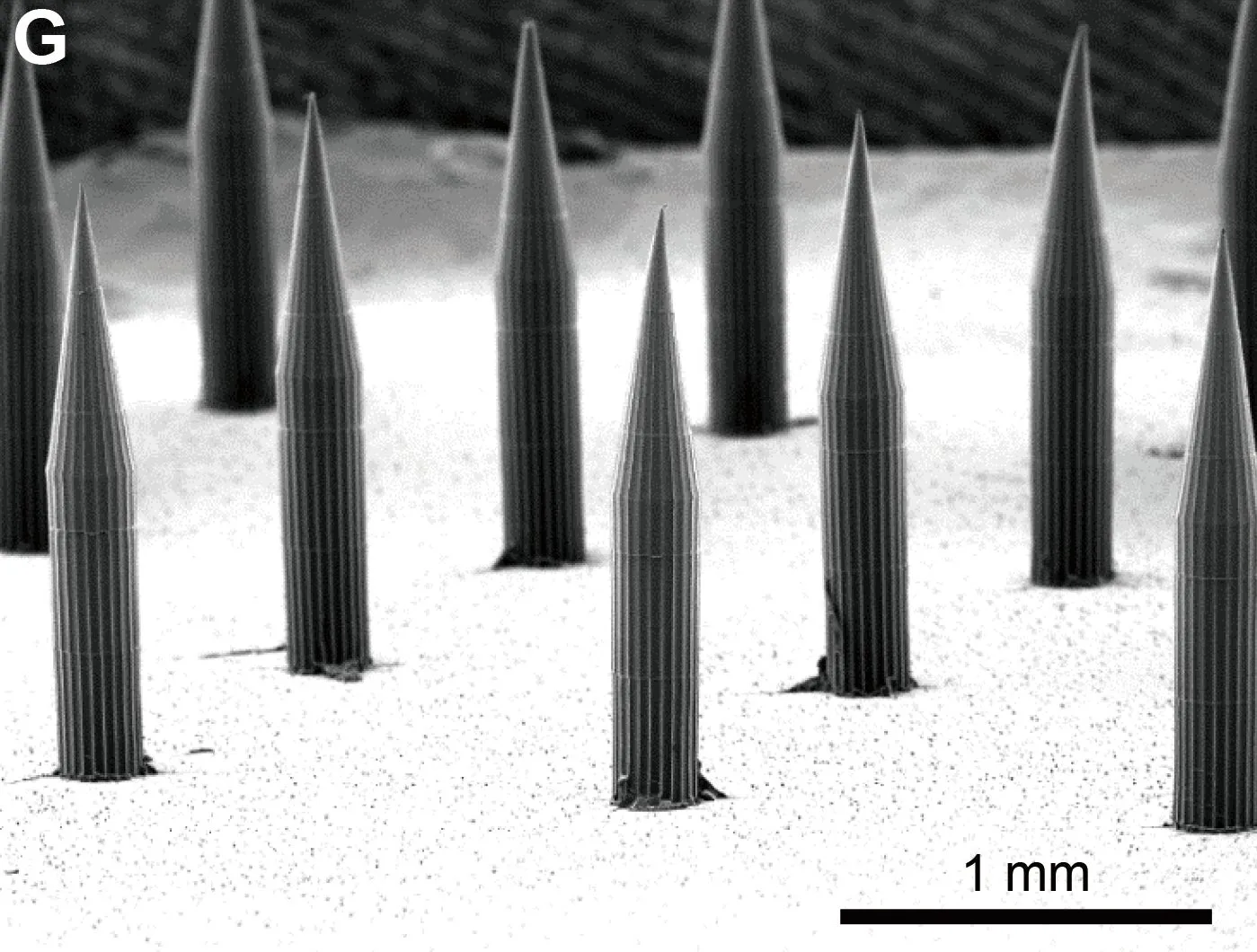
A close-up microscope image of the microneedle array, which could deliver quantum dots into skin. Credit: K.J. McHugh et al. Science Translational Medicine (2019)
The researchers designed their dye to be delivered by a microneedle patch rather than a traditional syringe and needle. The microneedles used in this study are made from a mixture of dissolvable sugar and a polymer called PVA, as well as the quantum-dot dye and the vaccine. When the patch is applied to the skin, the microneedles, which are 1.5 millimeters long, partially dissolve, releasing their payload within about two minutes.
By selectively loading microparticles into microneedles, the patches deliver a pattern in the skin that is invisible to the naked eye but can be scanned with a smartphone that has the infrared filter removed. The patch can be customized to imprint different patterns that correspond to the type of vaccine delivered.
“It’s possible someday that this ‘invisible’ approach could create new possibilities for data storage, biosensing, and vaccine applications that could improve how medical care is provided, particularly in the developing world,” Langer says.
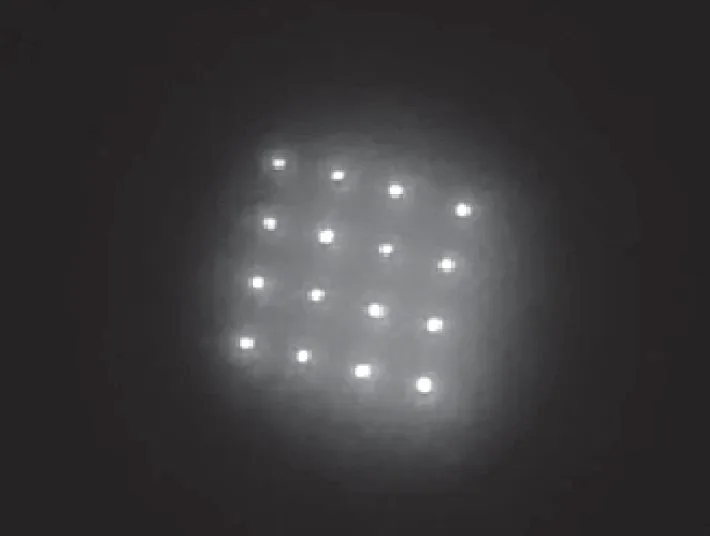
The quantum dots after being administered in the skin of rodents. Credit: K.J. McHugh et al. Science Translational Medicine (2019)
In an article published in Scientific America on December 18, 2019, titled Invisible Ink Could Reveal whether Kids Have Been Vaccinated, the author, Karen Weintraub, states that in the not too distant future vaccinations will be accompanied with an invisible ink tattoo:
The dye would be expected to last up to five years, according to tests on pig and rat skin and human skin in a dish. The system—which has not yet been tested in children—would provide quick and easy access to vaccination history, avoid the risk of clerical errors, and add little to the cost or risk of the procedure, according to the study.”
Already plans are underway to use these invisible quantum tattoo hidden in coronavirus vaccine. According to a research paper titled Quantum dots as a promising agent to combat COVID‐19:
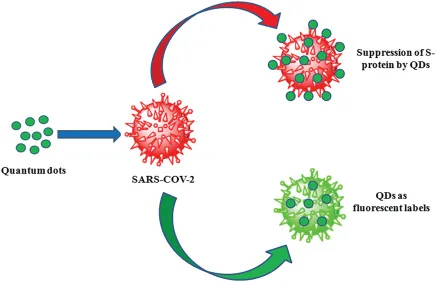 -
-Invisible Quantum Tattoo hidden in the Coronavirus Vaccine

Schematic representation of the actions exerted by QDs on SARS‐CoV‐2. QD, quantum dot; S protein, spike protein; SARS‐CoV‐2, severe acute respiratory syndrome coronavirus type 2
The development of antiviral nanomaterials by surface engineering with enhanced specificity might prove valuable to combat this novel virus. Quantum dots (QDs) are multifaceted agents with the ability to fight against/inhibit the activity of COVID‐19 virus.
Another project funded by Bill Gates would create your digital identity based on your vaccination history. Trust Stamp is a vaccination based digital identity program funded ... and implemented by Mastercard and GAVI, that will soon link your biometric digital identity to your vaccination records.
The program said to “evolve as you evolve” is part of the Global War on Cash and has the potential dual use for the purposes of surveillance and “predictive policing” based on your vaccination history. Those who may not wish to be vaccinated may be locked out of the system based on their trust score.
For latest updates on the outbreak check out our Coronavirus Coverage.
Send in your tips and submissions by filling out this form or write to us directly at the email provided. Join us on WhatsApp for more intel and updates.
GreatGameIndia is a journal on Geopolitics and International Relations. Get to know the Geopolitical threats India is facing in our exclusive book India in Cognitive Dissonance. Past magazine issues can be accessed from the Archives section.
You need to be a member of 12160 Social Network to add comments!
Join 12160 Social Network